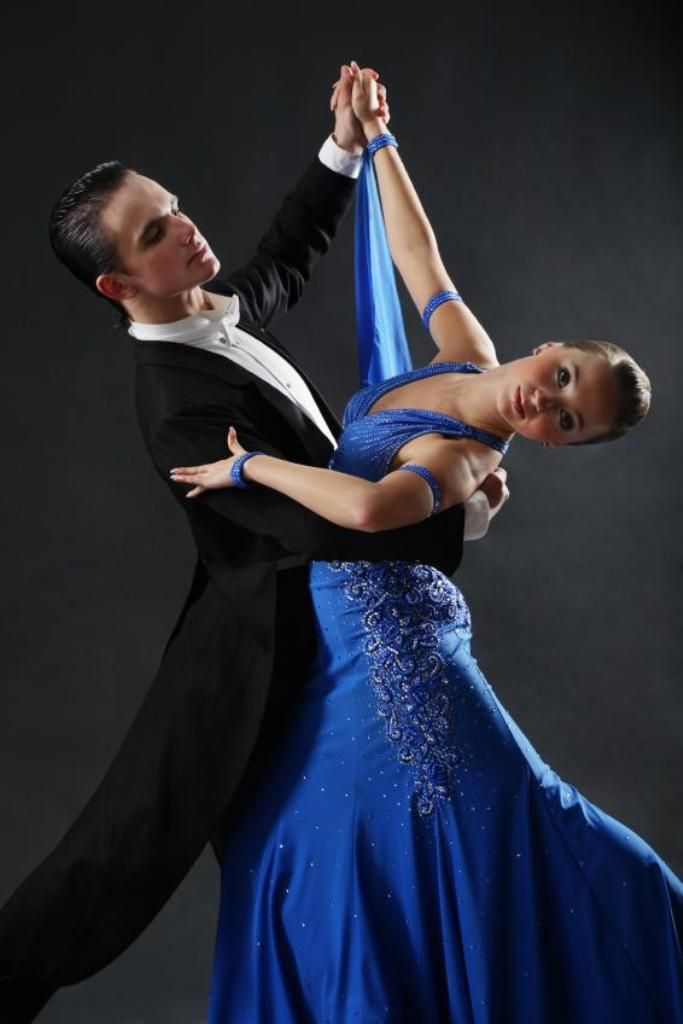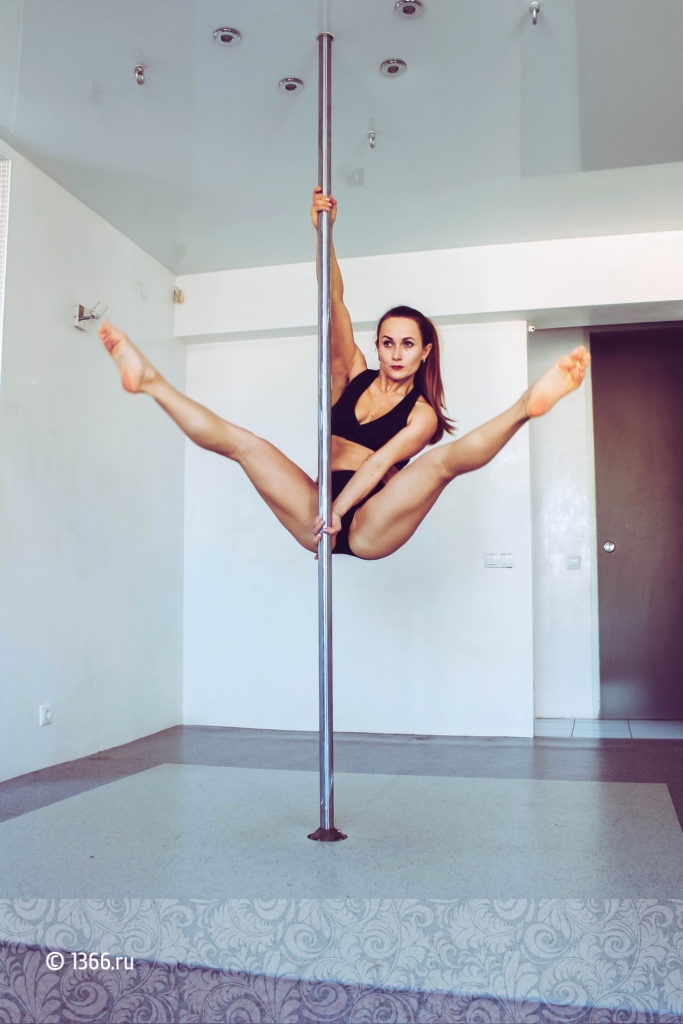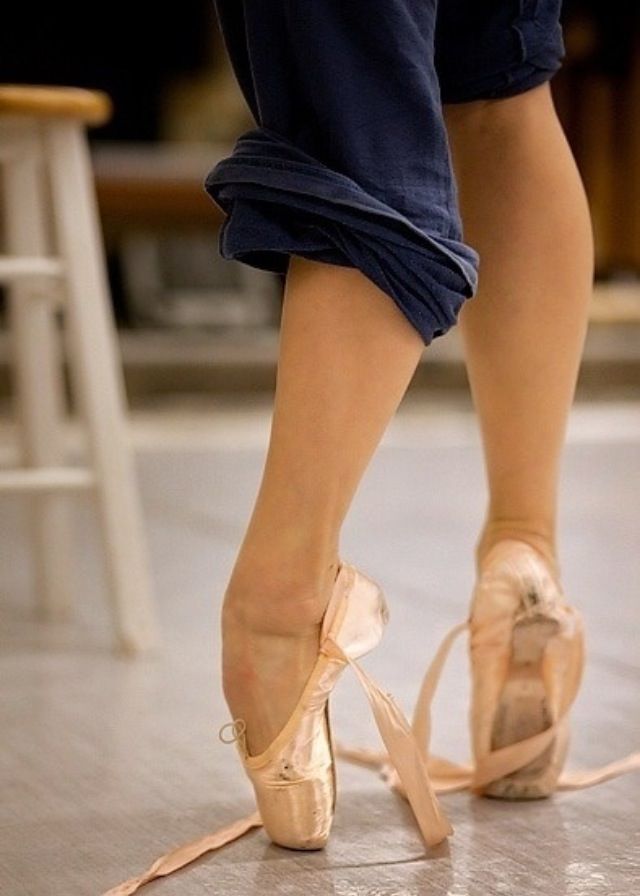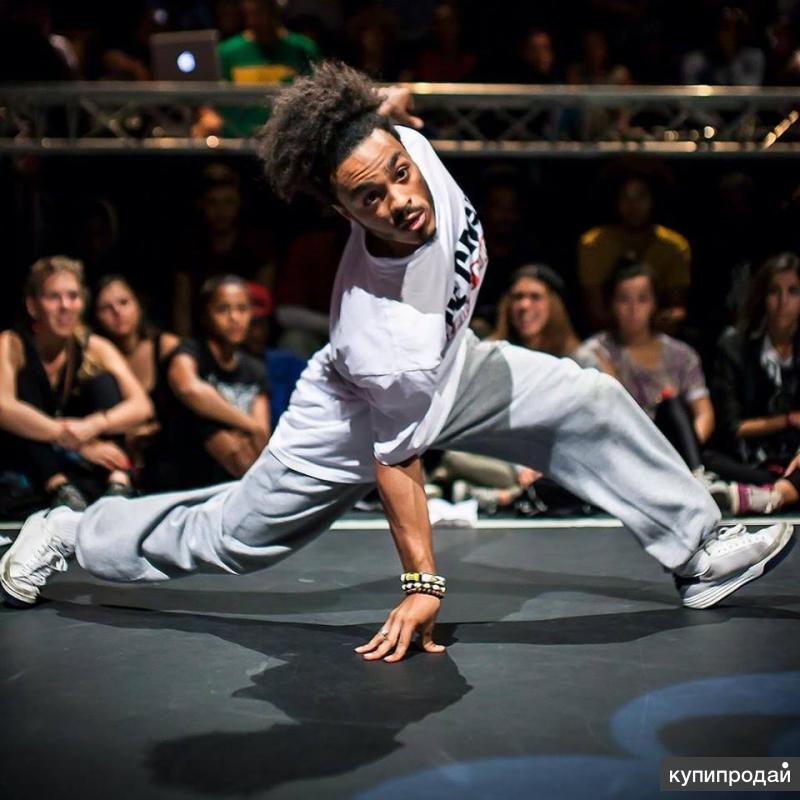How to ballroom dance waltz
Learn Basic Steps For Waltz
Waltz is an elegant, nearly universal dance, perfect for weddings, or almost any social occasion. It's not as hard to learn as most people think.
- Basic steps
- Instructions & Diagrams
- Video
- Recommended Video Lessons »
Quick intro
Waltz dates back to the late 17th century Europe, but has never really been out of fashion and clearly stood the test of time. It should probably be one of the first ballroom dances you learn.
It is a smooth and graceful dance with long, flowing movements, characterized by rise & fall motion. It has a unique 3/4 timing and a simple rhythmic pattern which blends with the music. You can start waltzing very quickly by just learning the simple box step.
Basic steps
The basic step for waltz is a box step. It's named after a pattern it creates on the floor (box or square) and forms the foundation of the dance.
A box step can be divided into two parts - a forward half box and a backward half box. Each half box has three steps - a step forward or backward, a step to the side, and a step to close the feet together.
The leader starts with the left foot and executes a forward half box, followed by a backward half box. The follower performs the opposite – she starts with the right foot and executes a backward half box, followed by a forward half box.
The basic box step pattern uses three counts - slow, quick, quick, which is repeated twice to create the box step. Timing is 1,2,3,1,2,3 or 1,2,3,4,5,6.
Instructions & Diagrams:
When dancing waltz someone has to lead and someone has to follow. Usually the man will lead and the woman will follow.
Men's Steps:
- Step forward with the left foot
- Right foot step sideways to the right
- Bring your left foot next to your right foot
- Step back with the right foot
- Step back sideways with the left foot
- Bring your right foot next to your left foot
Lady's Steps:
- Step back with the right foot
- Left foot step sideways to the left
- Bring your right foot next to your left foot
- Step forward with the left foot
- Step forward sideways with the right foot
- Bring your left foot next to your right foot
Video
In this video Leon and Kim will show you the basic box step.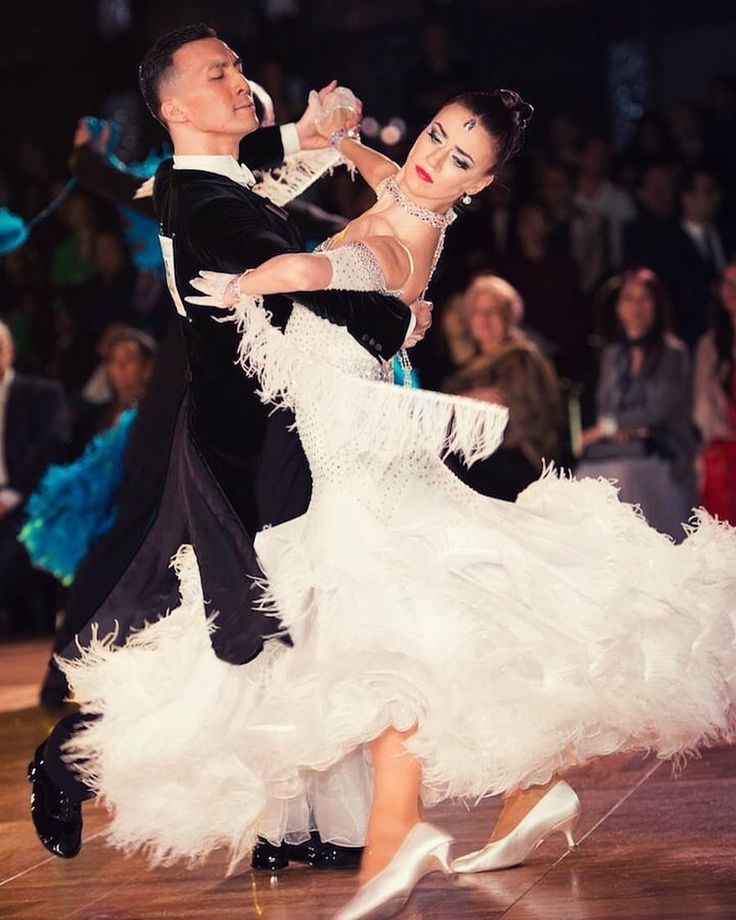 You will also get important tips on rise & fall movement which characterizes this dance:
You will also get important tips on rise & fall movement which characterizes this dance:
more videos »
Once you've mastered the basic box step, it's time to start rotating that box. It will usually be rotated to the left (counterclockwise), so it's called the Left Box Turn. It's quite simple: with each half box, you turn 1/4 of the turn to the left. After two boxes (or four half boxes) you will complete the turn and end up where you began. Then start all over again.
Ok, so now that you know the basic box and how to rotate it, lets continue with basic progressive. Here, as the name implies, the leader will always be moving forwards and the follower backwards. This will enable you to move around the dance floor instead of just dancing on the spot. Here is a clip from Learn & Master Ballroom Dance course that will show you in detail how it's done:
Where to go next?
Now that you know the basics, what's your next step (pun intended ;)? To go to the next level, we recommend one of the video training programs. Here are our recommendations »
How to Waltz for Beginners | 2023 Dancer’s Guide
Have you ever wanted to learn how to waltz? Whether it’s to surprise a significant other, learn a new dance style or just because it sounds fun, there’s never been a better time to learn how to waltz.
According to Fred Astaire Dance Studios, “dancing enhances memory, alertness, awareness, focus and concentration.” It’s also been known to offer protection against dementia and improve brain health. All that, and it’s fun, too!
From the Austrian waltz-like Landler in The Sound of Music to Bridgerton and Bindi Irwin and Derek Hough’s magically modern take on the Viennese waltz on Dancing with the Stars, the waltz is an elegant, sophisticated and graceful style of dance.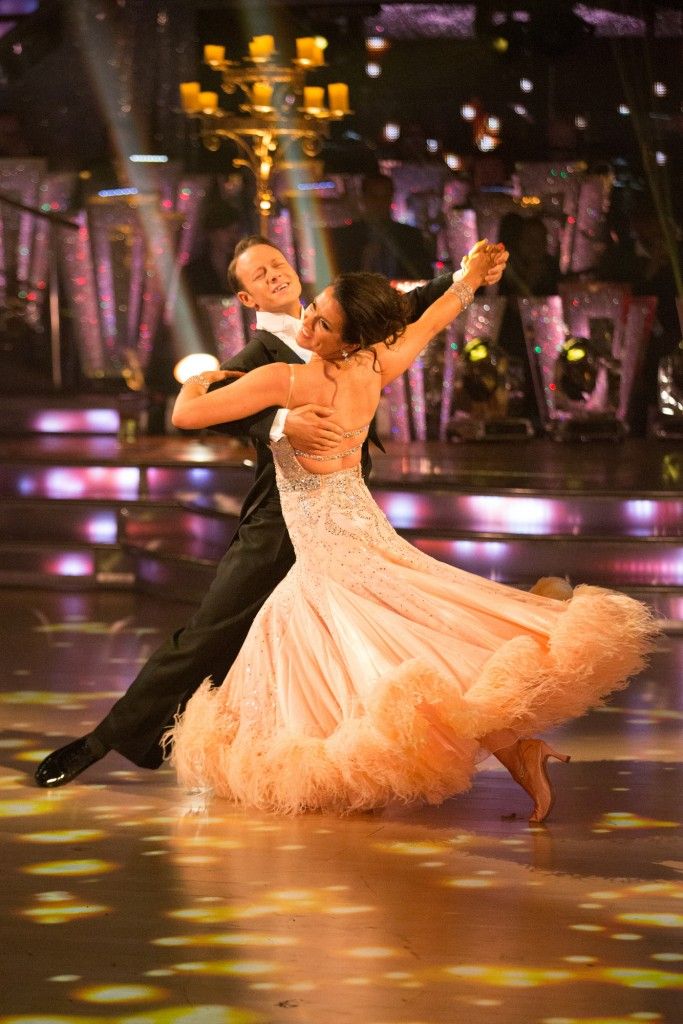
The waltz evokes a fairytale feeling of enchantment, but it’s become much more than aristocrats in pompadours, tuxedos, and the lavish bustles and lace of evening gowns. Let’s take a look at some steps (pun intended) you can take to learn how to waltz your way to becoming the next ballroom pro.
Jump to Section
- Is the Waltz Hard to Learn?
- Waltz Definition
- Types of Waltz
- Waltz Music
- What are the Basic Steps of Waltz?
- Waltz Step Pattern and Counting
- How to Waltz Turn
- How to Waltz With a Partner
- How to Waltz by Yourself
- The Waltz in Movies and Television
Is the Waltz Hard to Learn?
The waltz is one of the easiest dances for a beginner to learn. If you can step forward and backward, and count to three, you’re already halfway there. A great way to learn how to waltz is by taking a dance class. You’ll have fun, learn some new steps and get a great workout.
If you can step forward and backward, and count to three, you’re already halfway there. A great way to learn how to waltz is by taking a dance class. You’ll have fun, learn some new steps and get a great workout.
From dance classes in Colorado Springs to dance classes in San Diego, dance classes in NYC and dance classes near you, there are a wide array of waltz and ballroom dance styles to choose from.
Want to start learning how to waltz from the comfort of your own living room? Check out online dance classes. You’ll join a live instructor via Zoom or another digital platform. Practice those moves in private before heading to the ballroom or dance studio for more advanced lessons on how to waltz.
via CanvaWaltz Definition
So, what is waltz, exactly? As stated in Stanford University reports, the waltz dates back to 17th-century Europe, predominantly Austria and other Bavarian regions, and began as a country folk dance, and was considered "shockingly intimate.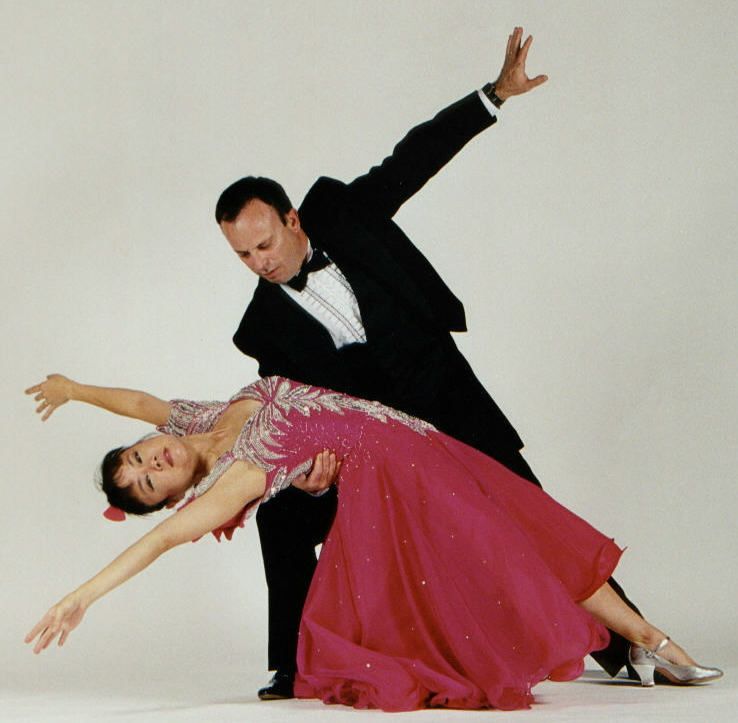 "
"
As for the waltz definition, the word waltz derived from the German word walzen, which means “to revolve.” This brings about an appropriate visual, as the waltz resembles the look of a revolving circle of dancers flowing around the floor. The rhumba, foxtrot and quickstep are derived from the waltz.
This romantic dance style is done in 3/4 time and includes Viennese, classic American waltz, international style waltz and others.
Types of Waltz
American Waltz
American ballroom waltz is the most common type of waltz. This is the style most dancers learn how to waltz as beginners. The American waltz has six basic steps that are repeated throughout the dance. The dancers move right-left-right in a counterclockwise movement around the room. More arm movement is used in this style than other styles.
Viennese Waltz
Viennese waltz is the original version that developed in Europe.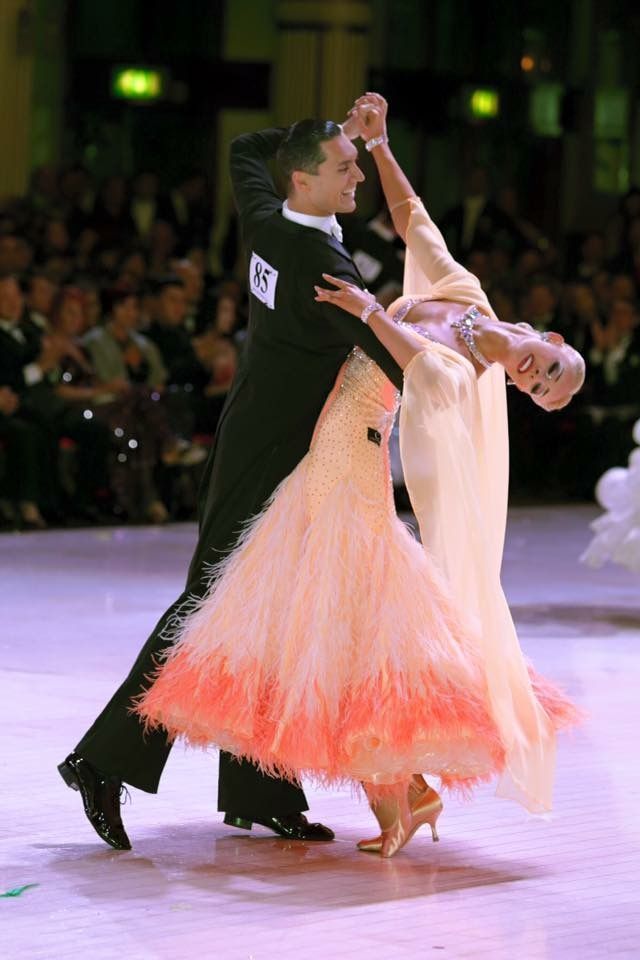 More advanced than other styles, dancers move quickly and do fast turns. Dancers move counterclockwise around the room. Consider learning how to waltz this style once you’ve mastered American ballroom.
More advanced than other styles, dancers move quickly and do fast turns. Dancers move counterclockwise around the room. Consider learning how to waltz this style once you’ve mastered American ballroom.
International Waltz
International waltz is like American, but the dancers move left-right-left. This style is often seen in dance competitions and is sometimes referred to as the slow waltz. It’s danced to slow music, making it another good choice for beginners who are learning how to waltz.
Country Waltz
There’s also a country version of the waltz, which is a slower style of dance. If you already know how to line dance, the country waltz is very similar. It’s faster than a traditional waltz and has faster music, making it a little more challenging to learn how to waltz in this style.
via CanvaWaltz Music
Waltz music is slower than the music of rhythm dances.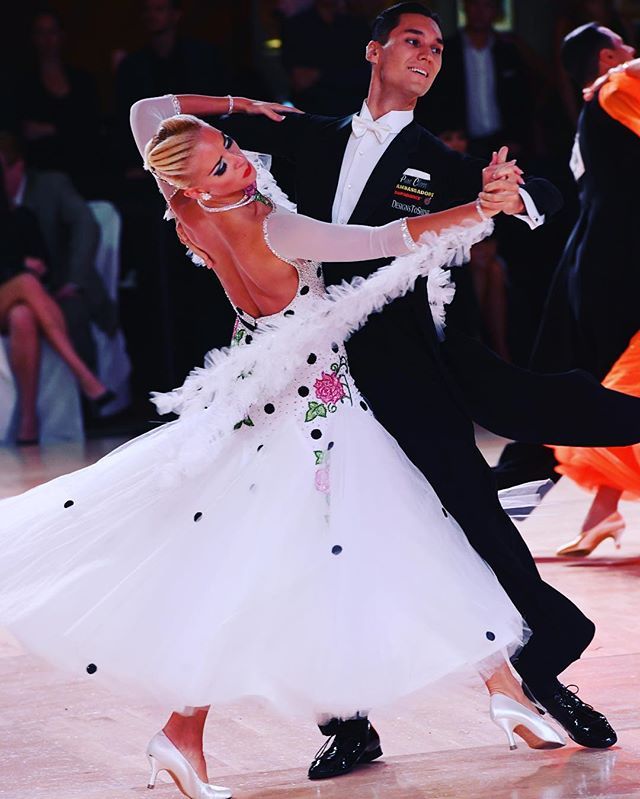 The first beat is usually a low bass note. The next two notes are a little higher. Classical music is the perfect choice to use when learning how to waltz, but contemporary and even country music can be used for a lovely waltz lesson.
The first beat is usually a low bass note. The next two notes are a little higher. Classical music is the perfect choice to use when learning how to waltz, but contemporary and even country music can be used for a lovely waltz lesson.
Examples of popular traditional and modern waltz music include:
- “The Blue Danube Waltz” — Johann Strauss II (known as the Waltz King)
- “The Emperor Waltz” — Johann Strauss II
- “Minute Waltz” — Frederic Chopin
- “Sleeping Beauty Waltz” — Pyotr Ilyich Tchaikovsky
- “Swan Lake Waltz” — Pyotr Ilyich Tchaikovsky
- “Skater’s Waltz” — Emile Waltdteufel
- “Are you Lonesome Tonight?” — Elvis Presley
- “Sunrise, Sunset” — Perry Como
- “Tennessee Waltz” — Anne Murray
- “Piano Man” — Billy Joel
- “Unforgettable” — Nat King Cole
- “The Way You Look Tonight” — Frank Sinatra
- “Perfect” — Ed Sheeran
What are the Basic Steps of Waltz?
When you first learn how to waltz, you’ll find that it comes down to a few basic steps that will help you achieve that lighter-than-air look of a true professinal.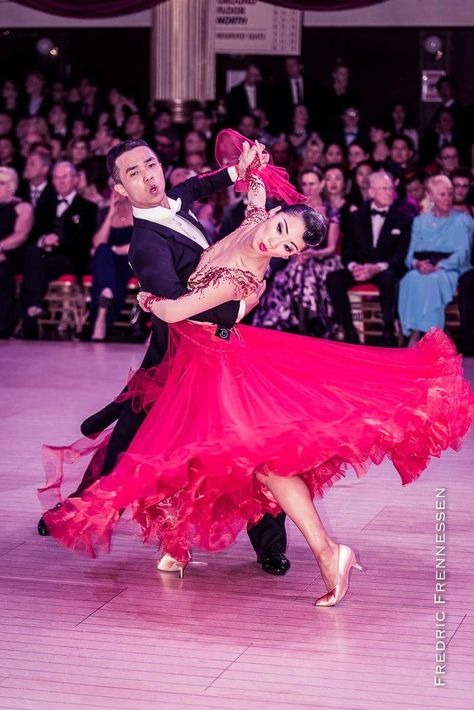
Basic waltz steps names include:
Box Step Waltz
The waltz box is the foundation of the entire dance. Dancers perform a series of six movements done in the shape of a box on the floor. The pattern is step-step-close.
Change Step
The change step helps dancers move around the floor.
Underarm Turn
In an underarm turn movement, the dancers break away and do different steps at the same time.
Cross Body Lead
The cross body lead is when you progress from a box step where the leader opens up and the follower goes by.
Hesitation Step
A hesitation step is used to change direction and for turning left or right when you learn how to waltz.
via CanvaWaltz Step Pattern and Counting
The basic steps of a waltz include three step counts: slow – quick – quick.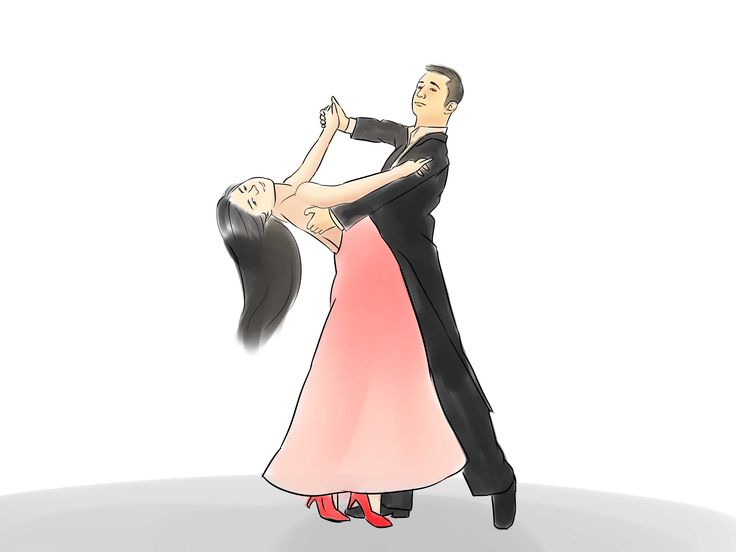 This sequence is repeated twice to create a box step. Timing is: 1, 2, 3, 1, 2, 3 or 1, 2, 3, 4, 5, 6.
This sequence is repeated twice to create a box step. Timing is: 1, 2, 3, 1, 2, 3 or 1, 2, 3, 4, 5, 6.
After learning this basic box step, you’ll then start rotating the box around the dance floor in a counterclockwise motion. After each half box, you’ll take a 1/4 turn to the left. Then, after two full boxes (or four half boxes), you’ll complete the turn back where you began. At this point, start all over. Voila! You’re waltzing.
How to Waltz Turn
A waltz wouldn’t be a waltz without those graceful turns (and spins, dips and flourishes as you get more advanced).
Natural Turn
The natural turn in a waltz is where the partners turn around each other clockwise.
Reverse Turn
With a reverse turn, partners turn counterclockwise around each other.
Turning Rock
Turning Rock is a unique pattern used to change direction using a rocking action.
How to Waltz With a Partner
With flowing fabric and smoothly synchronized steps, watching a waltz is the epitome of elegance and grace.
To learn how to waltz, two partners face each other standing about a foot apart. One acts as the leader, and one acts as the follower. The leader moves forward, and the follower moves backward.
There’s a quote that describes this, and it goes something like this: “Just remember, Ginger Rogers did everything [Fred Astaire] did…but backwards and in high heels.”
To start learning how to waltz, the leader places their right hand on the left shoulder of the follower. The follower puts their left hand on the right shoulder of the leader. The rest of the dance goes as such:
Steps for the Lead Partner
- Step forward with the left foot.
- Move your right foot sideways to the right.
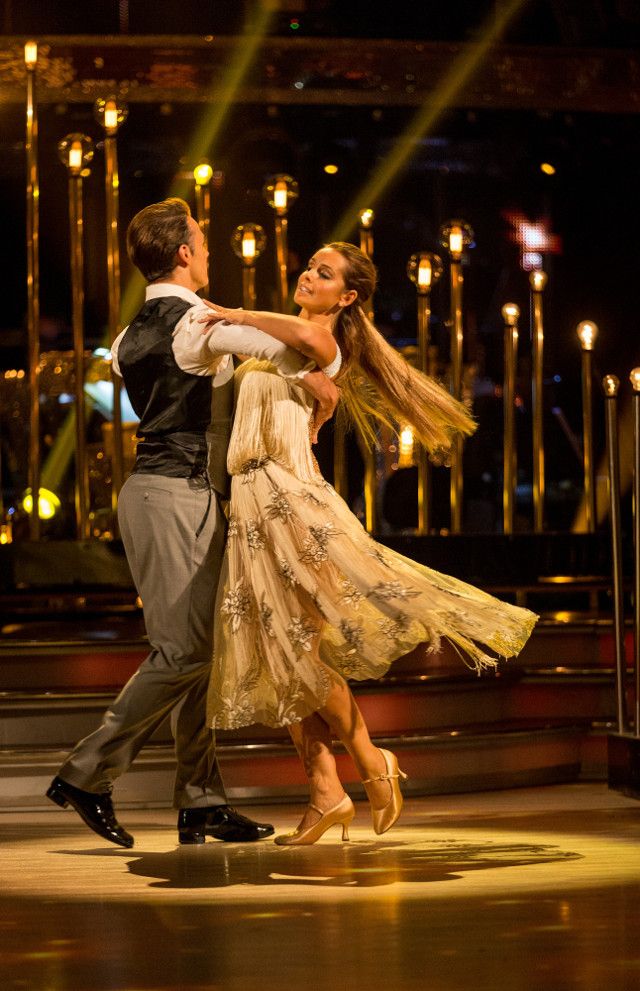
- Bring the left foot to the right foot. Your feet are parallel and not quite touching.
- Step back with the right foot.
- Step back with the left foot and move sideways to the left.
- Move the right foot next to the left foot. Your feet are parallel and not quite touching.
Steps for the Following Partner
- Step back with the right foot.
- Move your left foot sideways to the left.
- Bring the right foot next to the left foot. Your feet are parallel and not quite touching.
- Step forward with the left foot.
- Step back with the right foot and move sideways to the right.
- Bring the left foot next to the right foot.
 Your feet are parallel and not quite touching.
Your feet are parallel and not quite touching.
How to Waltz by Yourself
How do you waltz alone? If you don’t have a partner or would just like to learn some steps on your own, it’s easy to learn how to waltz by yourself. Simply learn the step formations of either the follower or the leader.
You’ll have some basics down pat before practicing with a partner. One of the biggest skills when you learn to waltz is learning to effortlessly change weight to appear light on your feet. Keep this in mind when learning how to waltz on your own.
The Waltz in Movies and Television
Spark your dancing dreams by watching some waltzes on the big or small screen.
- The Story of Vernon and Irene Castle (1939) — Fred Astaire and Ginger Rogers dance to “The Last Waltz”
- The Sound of Music (1965) — Maria and Captain Von Trapp dance to the Landler, an Austrian folk-style waltz
- My Fair Lady (1964) — Audrey Hepburn and Rex Harrison and “The Embassy Waltz”
- Anna Karenina (1997) — Sophie Marceau and Sean Bean
- Anna Karenina (2012) — Kiera Knightly and Aaron Taylor-Johnson
- 2001: A Space Odyssey (1968) — The ultimate weightlessness of space done to “The Blue Danube”
- Bridgerton (2020 – present) — Netflix’s hit show features a range of classical and modern music and waltzes done to Max Richter, Kris Bowers, Vivaldi and Shostakovich’s “Jazz Suite No.
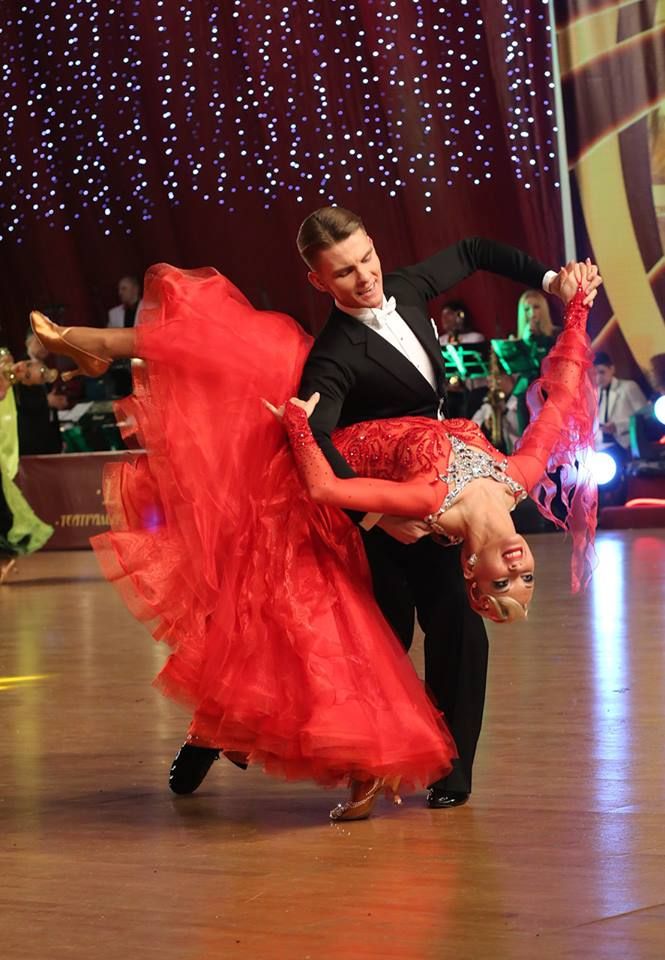 2”
2” - War & Peace (2016) — BBC’s adaptation starring James Norton and Lily James
- Beauty and the Beast (1991) — Belle and the Beast dance an enchanting waltz
- Downton Abbey (2019) — “The Sunset Waltz” by Johann Straus II
Weddings, anniversaries, retirement parties, holiday events and other special occasions are all worthy of a waltz or two. When broken down into small steps, learning how to waltz is quite simple.
With some practice and our tips, you’ll be swooping, twirling, dipping and turning like a ballroom pro in no time!
For even more creative ideas and inspiration, check out other experiences happening on Classpop!
Related Articles
A Beginner's Guide to Bachata DancingA Beginner's Guide to Cumbia Dancing
How to Belly Dance (With Confidence!)
How to Line Dance Like a Pro
How to Slow Dance With Style
How to Salsa Dance Beginner’s Guide
🤬 How to dance the waltz? | Interesting facts
Dancing is the best way to express your feelings and get even closer to your loved one.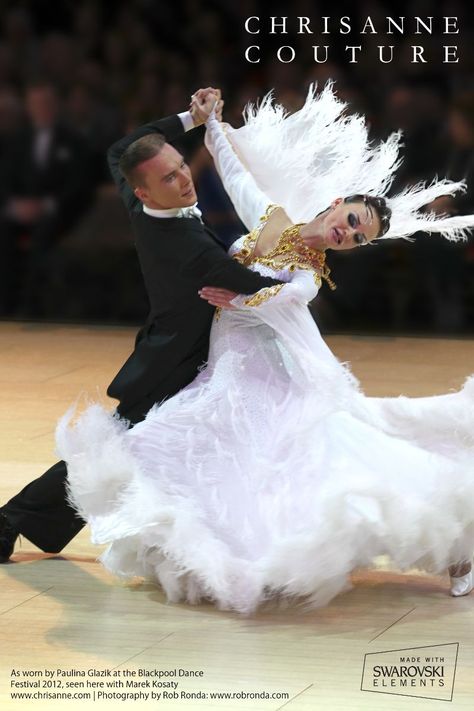 Waltz is the most romantic pair dance. That is why every self-respecting person should be able to dance the waltz.
Waltz is the most romantic pair dance. That is why every self-respecting person should be able to dance the waltz.
How to learn to dance the waltz?
To learn how to dance this beautiful dance smoothly and beautifully, it is best, of course, to start from childhood. The child's mind grasps everything new much faster, and the child's body is more pliable to new loads and movements.
Waltz is included in the ballroom dancing program
Thus, if you have a child, it is better to immediately send him to the ballroom dancing section so that in a couple of years you can admire the performances of your child. So your baby will get used to discipline and beauty from childhood, and you can be proud of his successes and achievements.
If you are eager to learn how to waltz yourself, you will have to come to terms with the fact that you will need patience. The main thing is not to lose perseverance and train. Remember that at first something may not work out, but over time everything will definitely work out, and you will be free to dance the Viennese waltz.
Remember that at first something may not work out, but over time everything will definitely work out, and you will be free to dance the Viennese waltz.
The ability to dance the waltz was highly valued in high society
It is best to sign up for a ballroom dance course. Experienced instructors will help you integrate into the dance environment and help you learn all the necessary movements as quickly as possible. Be sure to choose your courses carefully so as not to be disappointed. Ask friends and acquaintances which club has the best reputation. Many clubs have open free lessons at the beginning of the season, where you can get to know the teachers, the school and find out the schedule.
If you do not like or are embarrassed by noisy companies, you can use the services of a private teacher. Of course, this is not the cheapest pleasure, but a calm environment will help you relax and learn the material faster.
How to dance the waltz
For those who are especially busy, and maybe a little lazy, the best option would be to learn to dance at home.
How to learn to dance the waltz at home?
So, if you dream of not only circling around the hall in a beautiful outfit, but also feeling the music, as well as correctly performing all the movements, then it is best for you to contact a private instructor. As we noted above, this is very convenient. In addition, a personal teacher will be able to objectively assess your abilities and characteristics, and teach you how to dance.
To get the most out of your private lessons, start by learning to dance. It will be useful to get acquainted with the features of such types of waltz as: Viennese, Friendship, French, Boston, Figured. Find out how and when they originated, where they were danced, what are the differences.
The newlyweds choose the waltz as their first dance
To learn how to dance the waltz, like any other dance, you need to learn to feel the music. Get a player and download waltz music.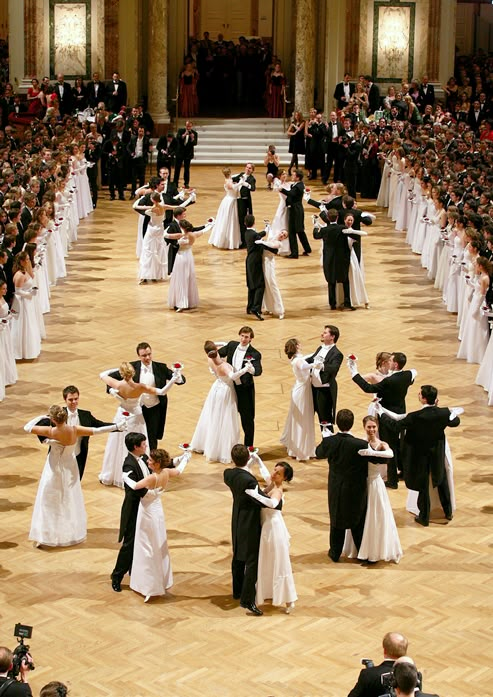 Listen to it in your free time, trying to imagine the movements that can be superimposed on this music.
Listen to it in your free time, trying to imagine the movements that can be superimposed on this music.
You can also use instructional videos to learn how to waltz. So we can gradually master the skill of dancing in a calm home environment. In addition, the video allows you to repeat the necessary part of the lesson if necessary. Yes, and it costs much less, because you can download the lesson on the Internet. If you buy a CD with lessons, it will cost you less anyway.
Perhaps one of your friends or relatives knows how to dance this dance. Ask him to teach you, or to correct the technique. In any case, practice as often as possible at home, go to open classes or events where you can work out with new partners once again.
Viennese waltz: video lesson
To learn how to dance the waltz, you need to immerse yourself in the atmosphere of the dance. This will set you in the right romantic mood. If this becomes your real hobby, success in learning the waltz will not be long in coming.
How to dance the waltz?
Before you start learning the Viennese Waltz, it is important to prepare yourself and your body. To do this, you need to tune in and start training the body. So, try to do a warm-up every day, preferably to the music of the Viennese waltz. This will set you in the right mood, you will have time to get used to the music and rhythm.
Try to perform all movements smoothly, to the beat of the music. Sudden movements can harm you, especially if you are not used to it. Pay special attention to stretching, especially the hands and socks. To do this, perform lifts on toes, rotations. Try also to stretch your fingers, and keep your hands at shoulder level. In no case should the shoulders be raised in the dance, it looks ugly.
Waltz - partner dance, a lot depends on your partner
Of course, the ideal option would be to learn to dance the waltz together with a partner.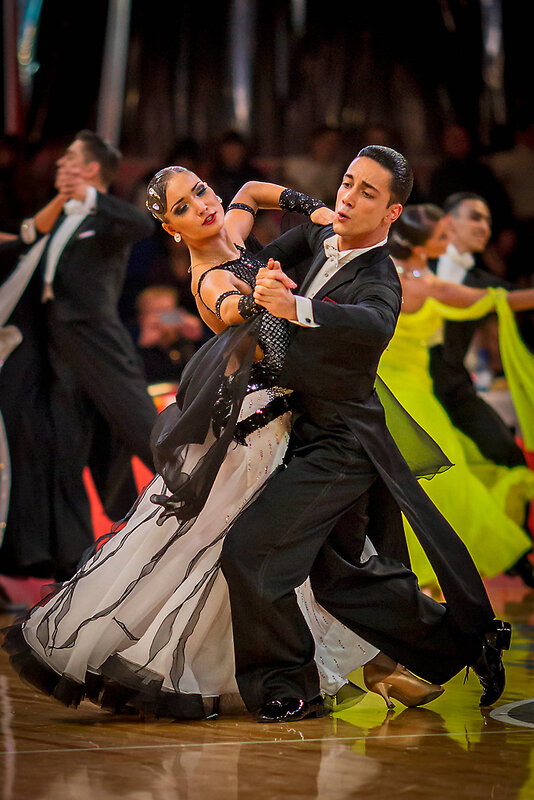 This will bring you closer to your loved one. A shared hobby is very good for a relationship, so of course it's worth learning to waltz together, not apart.
This will bring you closer to your loved one. A shared hobby is very good for a relationship, so of course it's worth learning to waltz together, not apart.
The editors of uznayvse.ru wish you patience in learning such a dance as the waltz. But we assure you - the result will be worth it. You can impress everyone or make your old dream come true.
Slow Viennese Waltz
Slow Waltz — gentle, flying, magical, full of charm and able to bewitch with its pattern. This is one of the most romantic dances, showing sublime feelings, like blossoming flowers. The ability to circle the ballroom in a slow waltz is highly valued at all times and speaks of excellent education. The waltz returned to weddings and social events, student balls and family reunions.
If you don't know the steps and don't know how to dance a slow waltz, this is no reason to deny yourself the pleasure. Experienced teachers will teach you this beautiful dance in a few lessons. The coaches of the sports and dance club master the art of waltz dancing to perfection and regularly prove their skills at championships and competitions in sports ballroom dancing.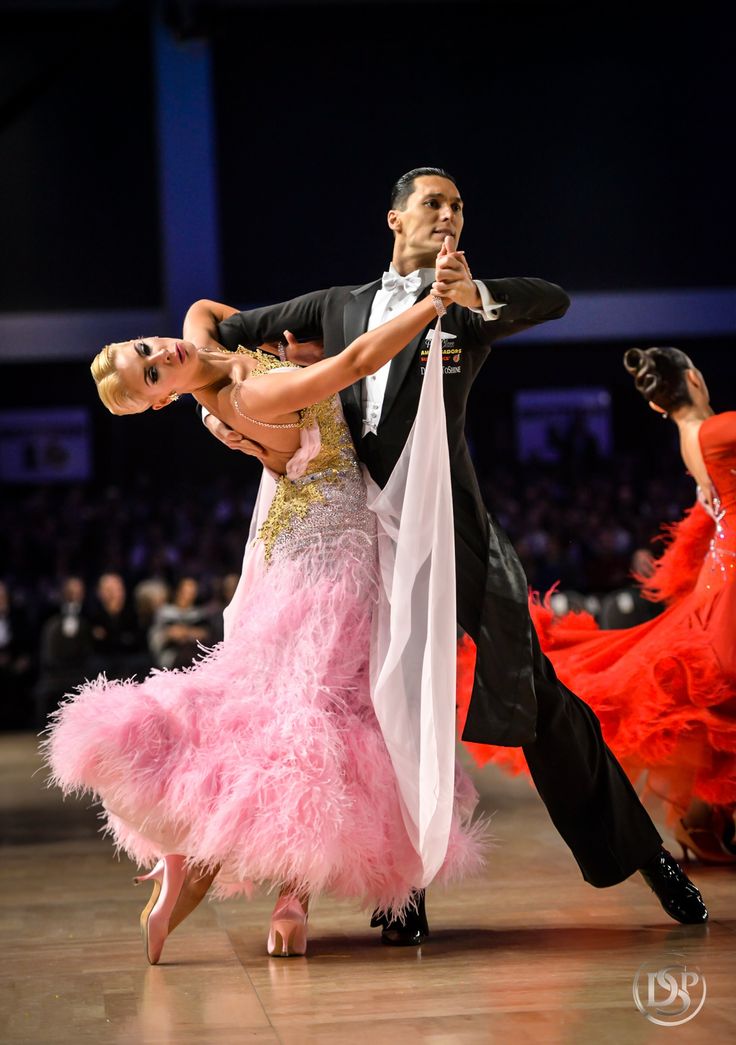 All of them are multiple prize-winners and winners of tournaments.
All of them are multiple prize-winners and winners of tournaments.
As the experience of many years of teaching shows, children, teenagers, and adults of any age can master the ability to dance a slow waltz. His movements are exquisite, but the basic steps and elements are easy to master. Slow waltz lessons will also be a good opportunity to improve your overall physical shape, master several classical movements, and learn how to move beautifully on the floor.
Dance lessons are enjoyable, and the ability to glide through the hall is admired by the audience. Adult students appreciate not only the acquired skills, but also new facets of their own personality that open up during classes. Many realize that they can do much more than they thought before. A quick effect is possible if you need to go through the waltz tour once at a holiday.
The true art of dance requires hard work and long practice. Many come for one or two lessons, wanting to learn a couple of steps, and then stay at the dance school for a long time.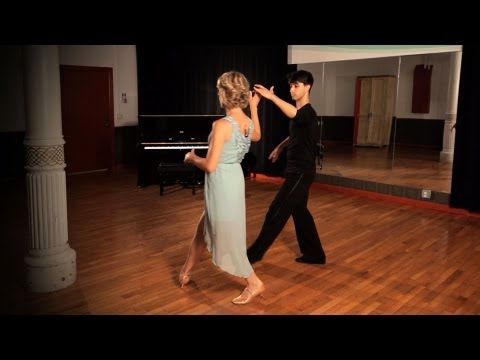 Here you already have to find in yourself and show patience, perseverance, perseverance. It helps to find strength in yourself by the fact that in the classroom you will certainly find many new friends who will support and encourage you.
Here you already have to find in yourself and show patience, perseverance, perseverance. It helps to find strength in yourself by the fact that in the classroom you will certainly find many new friends who will support and encourage you.
Young people love the slow waltz for its style and the opportunity to express their individuality in a new way. Dancing is "dragging", after the first success you want to achieve more. The desire to become better leads to the fact that many are seriously interested in ballroom dancing, striving for new achievements. In addition, modern secular culture makes the ability to dance beautifully an essential quality of a successful person.
Ballroom slow waltz is a great way to express yourself, to tell a special, unique story, to tell others about what is happening in the depths of your soul. Such a dance is a real classic, an incredibly organic and moderate style that allows each of the partners to open up gradually, to live a small, bright and rich “life”.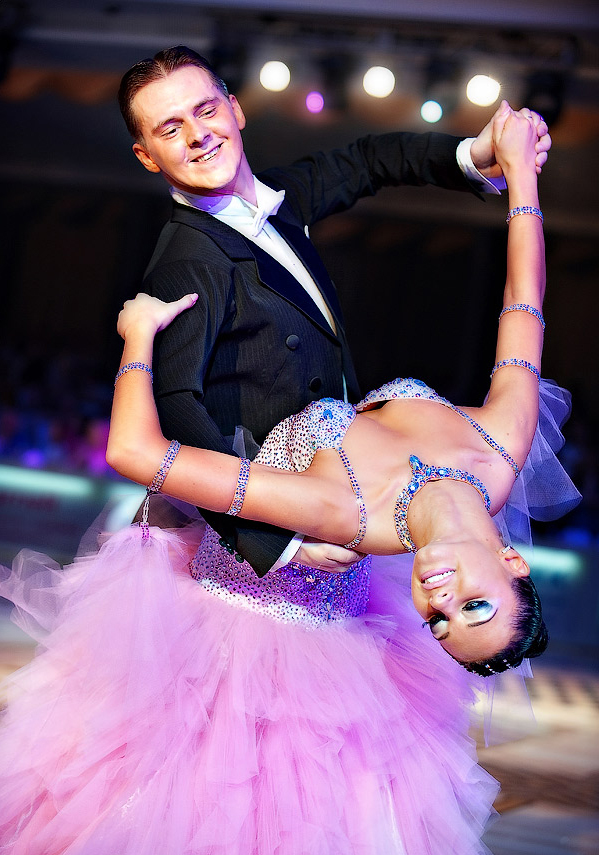 This is an incredibly beautiful genre - the dance fascinates and intrigues, its composition clearly reads the preface, the main part, the climax and the denouement - everything is like in an excellent novel, only the events are tracked firsthand, and their main character is you. Many people think that ballroom slow waltz is a great pastime exclusively for teenagers and young adults. Alas, this is a delusion! Everyone dances, regardless of age, gender and social status.
This is an incredibly beautiful genre - the dance fascinates and intrigues, its composition clearly reads the preface, the main part, the climax and the denouement - everything is like in an excellent novel, only the events are tracked firsthand, and their main character is you. Many people think that ballroom slow waltz is a great pastime exclusively for teenagers and young adults. Alas, this is a delusion! Everyone dances, regardless of age, gender and social status.
If you like couples swirling harmoniously to the beat of music, but worry that you yourself will never be able to do it, leave this false belief behind! Experienced choreographers of our club will help you achieve a professional level! Viennese waltz lessons start with the basics: no one will ever require you to perfectly feel the melody and fully adapt to its rhythmic pattern during the first lesson. Each stage passes gradually, the most comfortable conditions are created for the participants, a relaxed, calm, friendly atmosphere is organized.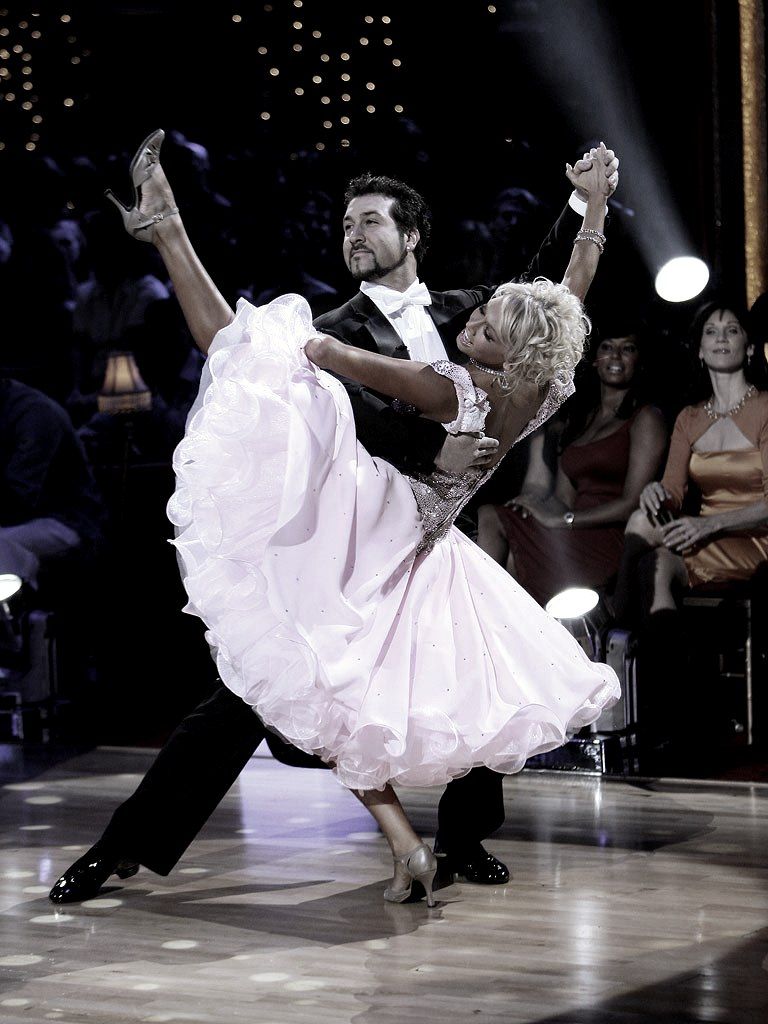 The instructor will find an individual approach to any of the registered students, choose the most effective and efficient teaching method. All incomprehensible moments will be explained and repeatedly shown, broken down into the smallest elements and consistently “honed”.
The instructor will find an individual approach to any of the registered students, choose the most effective and efficient teaching method. All incomprehensible moments will be explained and repeatedly shown, broken down into the smallest elements and consistently “honed”.
Slow waltz ballroom dancing is a great chance to learn to listen and hear your body, to master it perfectly. After just a few sessions, you will feel how the muscle clamps gradually “release” your back, face, arms, and hips. This is a completely normal and natural process: by performing movements, a person gets rid of the negativity and tension that has accumulated in the body for years - allows them to splash out into movements, manifest themselves in an environmentally friendly and safe form for their own psyche and the nervous system of others. After each workout, an incredibly pleasant relaxation sets in: you feel muscle tone, you feel a slight, pleasant physical fatigue. By the way, if you are worried that an unbearable load awaits from the first lesson, you are mistaken: experts take into account your level and give only what you can definitely do.